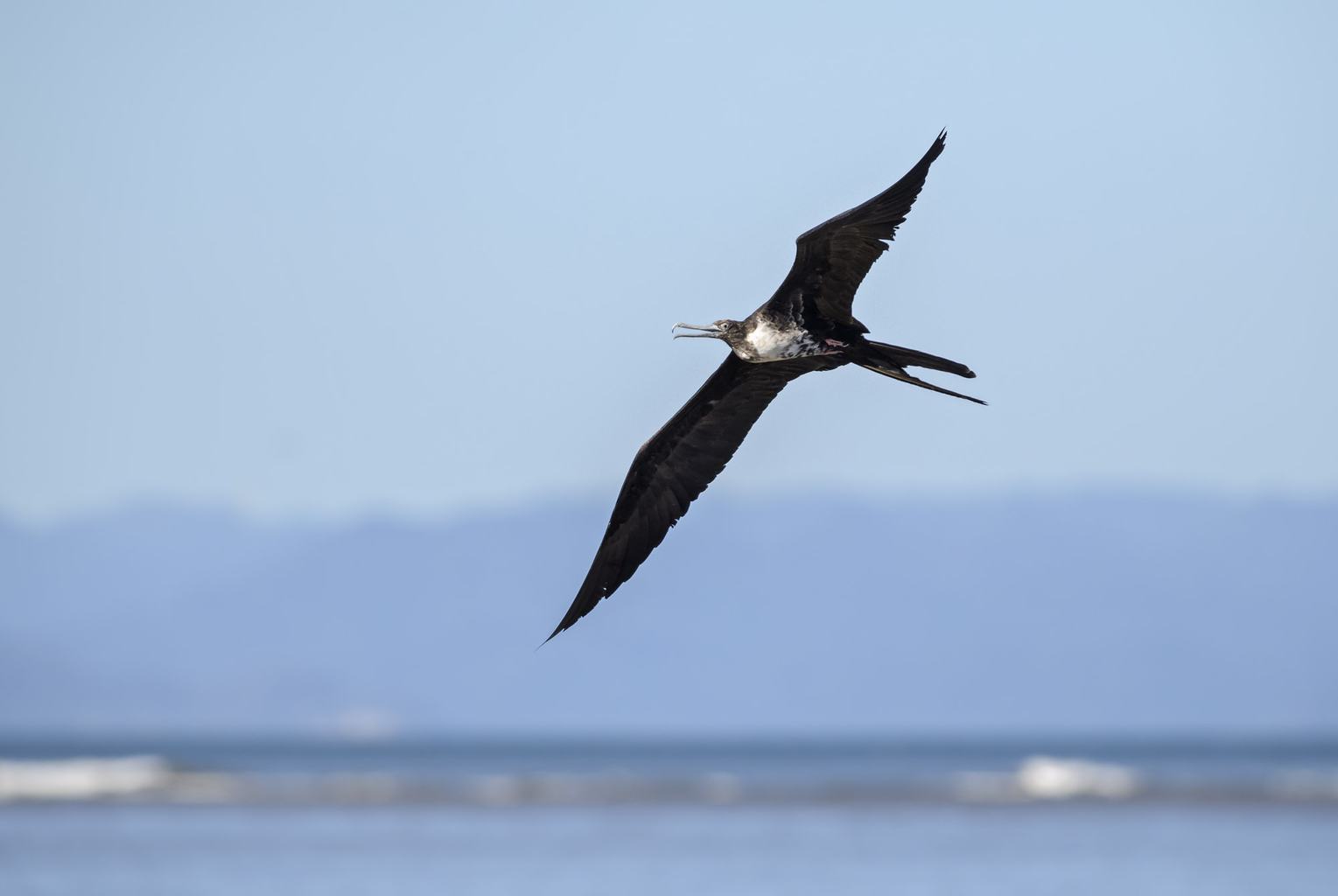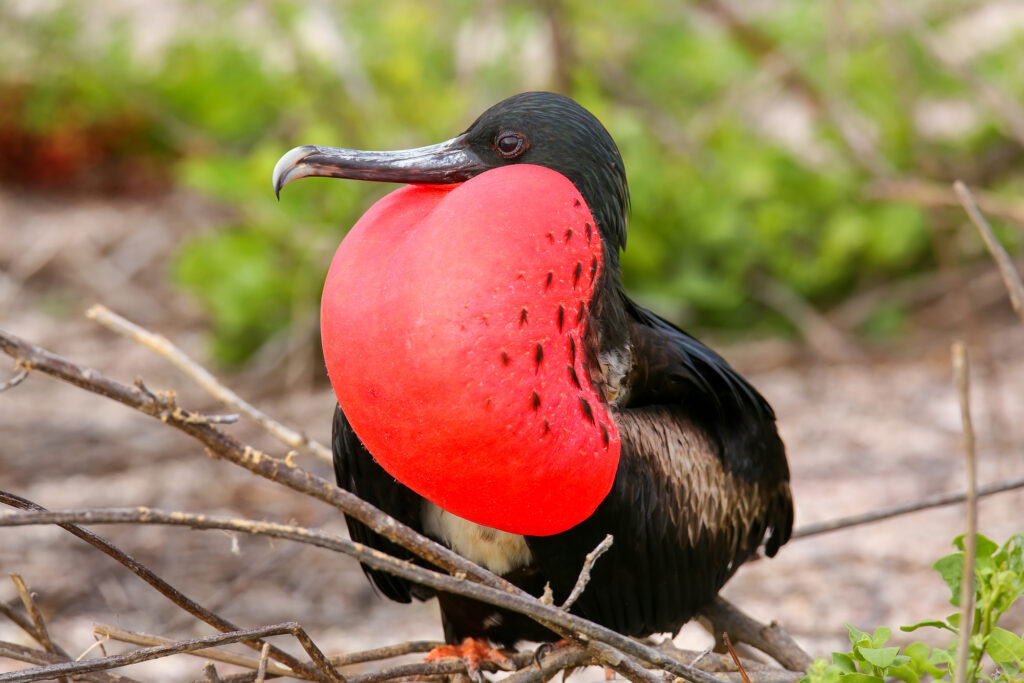Magnificent frigatebirds are large seabirds that inhabit the skies in the Americas’ warmest ocean climates.
The species is the largest species of frigatebird. It is known for the males’ red throat pouches seen only during breeding, its penchant for harassing and stealing food from other birds, and its ability to fly for days or even weeks without landing.
What Does It Look Like?
Male and female magnificent frigatebirds look considerably different, a rare feature in the seabird world.
Males sport an inconspicuous red throat patch that’s easy to miss outside of mating season.
However, come breeding season, it’s anything but inconspicuous, inflating to a large, bright red pouch to impress potential mates.
Both males and females have long dark wings and forked tails. While males are all dark, the female has a white patch separating its dark face from the rest of its body.
Range, Migration, and Habitat
Magnificent frigatebirds are mostly seen along open coastlines and out at sea around South America, Central America, and the Caribbean, along with southern coastlines of North America like the Gulf of Mexico, Florida, and southern California.
Magnificent frigatebirds nest in low vegetation on islands and coastlines. After nesting, they will move out to sea, where they don’t leave the sky very often.
These soaring seabirds don’t have waterproof feathers, so they aren’t diving birds, and they rarely land on the surface of the water. They can fly for long periods without ever stopping, and even sleep while in flight.
According to the Galapagos Conservation Trust, they’re capable of flying for 10 days without ever stopping.
How Big Is It?

According to the Cornell Lab of Ornithology’s All About Birds, the magnificent frigatebird’s length ranges between 35 and 45 inches with a wingspan of just over seven feet. They weigh between 2.2 and 4.2 pounds.
That weight with such a big wingspan gives the magnificent frigatebird the title of the largest wing surface area relative to body weight of any bird on the planet, according to Houston Audubon.
What Does It Sound Like?
All About Birds states that magnificent frigatebirds are mostly silent when at sea, but they do make sounds in other situations, such as fighting, coming in for a landing, courtship, or begging for food as you can here in this soundbite:
Other noises include clicking display noises and drumming, as heard in this video:
What Does It Eat?
Magnificent frigatebirds eat squid, small turtles, and fish that they can acquire from the surface of the water without submerging themselves in the water, but they also steal from other birds.
This species has earned itself a couple of nicknames that point to its feeding habits, including “pirate bird” and “man-o-war.”
These big birds have a penchant for following smaller sea birds and harassing them until they give up their catch, then swooping down to retrieve it before it hits the water.
According to the Galapagos Conservation Trust, frigatebirds will grab the tail feathers of tropicbirds and boobies and shake them and force them to let go of their food.
You can see them do just that in this video from BBC Earth:
They do also find some of their own food, picking off meals from the top of the ocean’s surface. As mentioned earlier, they don’t dive since their feathers lack waterproofing.
How Long Does It Live?
The oldest recorded magnificent frigatebird was recaptured and released as part of a study in the Lesser Antilles and was at least 19 years, nine months old, according to All About Birds.
Conservation Status
With its large range and considerable population, magnificent frigatebirds are classified as “least concern” by BirdLife International.
While the organization states that the population is decreasing, it doesn’t meet the standard for being considered “vulnerable.” This would require either a 30 percent decline or greater over 10 years or three generations or a population of less than 10,000 mature individuals with a continuing decline over 10 percent in 10 years or three generations.
BirdLife estimates a population size of 130,000 over the birds’ range of roughly 33 million square miles.
Other Frequently Asked Questions
Why Can’t Frigatebirds Get Wet?
Unlike most seabirds, frigatebirds don’t have waterproof feathers, so they can get bogged down pretty quickly when wet.
How Long Can a Frigatebird Fly Without Landing?
Frigatebirds can remain in the air without stopping on the water or land for a very long time.
Frigatebirds, magnificent frigatebirds included, are among the birds that can sleep while flying.
Great frigatebirds, closely related to their magnificent cousins, can stay in the air for up to two months consecutively, according to the National Audubon Society.

